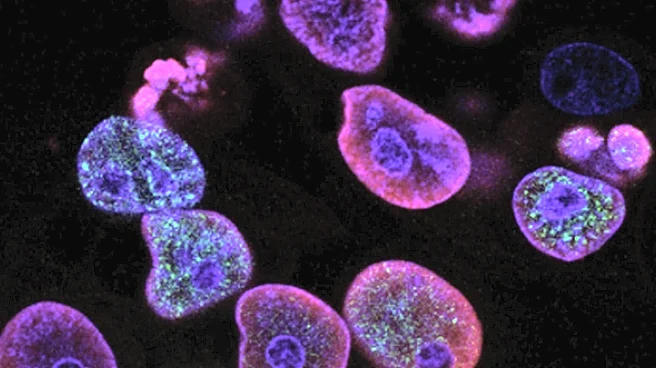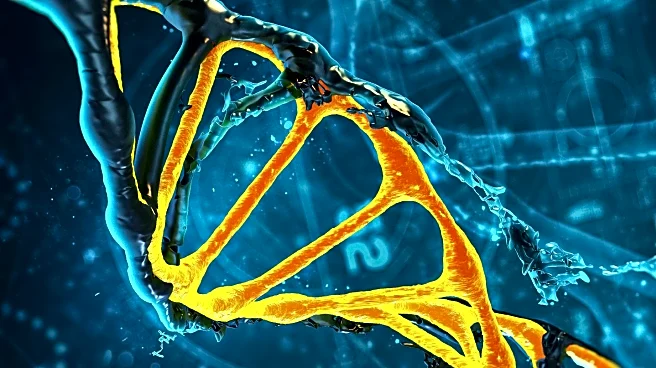What's Happening?
Recent research has identified a mechanism by which cancer-associated fibroblasts (CAFs) contribute to chemoresistance in gastric cancer through the GAS6/AXL/STAT3/ABCG1 pathway. The study highlights the role
of CAF-derived GAS6 in promoting gastric cancer cell migration and resistance to chemotherapy. The use of 9im, a selective AXL inhibitor, was shown to reverse these effects, restoring chemosensitivity in gastric cancer models. The findings suggest that targeting the GAS6/AXL axis could enhance the efficacy of chemotherapy in treating gastric cancer.
Why It's Important?
The discovery of the GAS6/AXL/STAT3/ABCG1 pathway provides critical insights into the mechanisms of chemoresistance in gastric cancer, a major challenge in cancer treatment. By understanding how CAFs contribute to resistance, researchers can develop targeted therapies to improve patient outcomes. The use of AXL inhibitors like 9im in combination with chemotherapy could offer a new approach to overcoming resistance, potentially leading to more effective treatment strategies and improved survival rates for gastric cancer patients.
What's Next?
Further research is needed to explore the clinical application of AXL inhibitors in gastric cancer treatment. Clinical trials may be conducted to evaluate the efficacy and safety of combining AXL inhibitors with standard chemotherapy regimens. The study's findings could lead to the development of new therapeutic strategies aimed at targeting CAF-mediated resistance, potentially influencing treatment protocols and improving patient prognosis.
Beyond the Headlines
The study raises important questions about the role of the tumor microenvironment in cancer progression and treatment resistance. Understanding the interactions between cancer cells and surrounding fibroblasts could lead to broader implications for cancer therapy, emphasizing the need for comprehensive approaches that address both tumor biology and microenvironmental factors.











